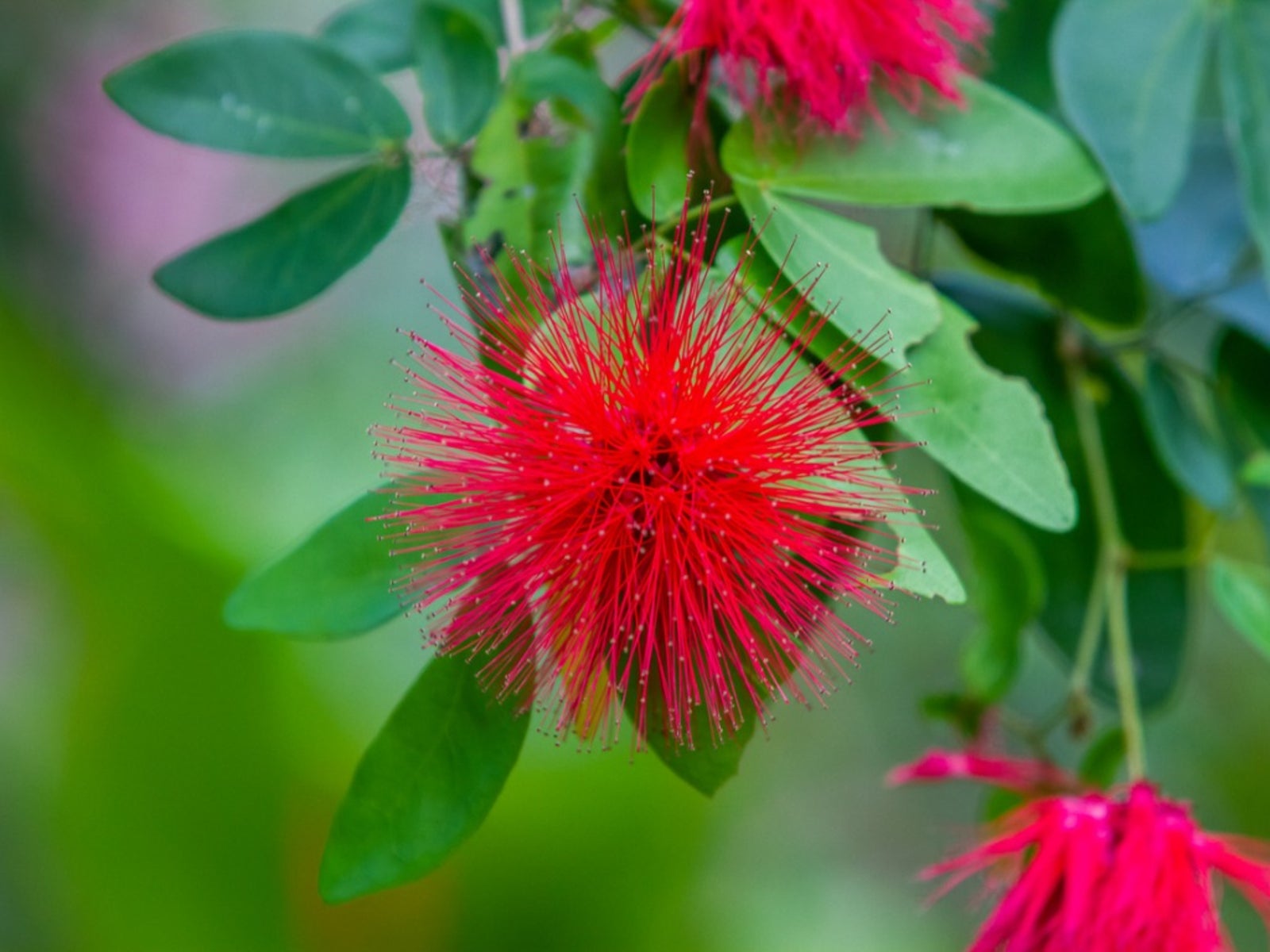Growing Fairy Duster Plants - Care Of Calliandra Fairy Dusters


If you garden in the hot, arid desert, you'll be happy to hear of the fairy duster plant. In fact, you may already be growing drought tolerant Calliandra fairy dusters for their unusual, puffy blooms and feathery foliage, or to attract a range of birds to the arid desert garden. Growing fairy duster is a perfect choice for this type of climate.
How to Grow a Calliandra Fairy Duster
Three types of the fairy duster plant are native to the southwestern U.S. These are:
- Calliandra eriophylla, which is also called False Mesquite
- Calliandra californica, known as Baja fairy duster
- Calliandra penninsularis, the La Paz fairy duster
Calliandra fairy dusters are small evergreen shrubs and retain foliage for much of the year. Height and width vary from 1 to 5 feet (31 cm. to 1.5 m.). The round, furry blooms are generally in shades of white, cream, and pink. Growing fairy duster prefers a sunny area, the hotter the better. The 1 to 2 inch (2.5-5 cm.) balls of blooms (actually stamens) grow best in full sun. Though the fairy duster plant can take some shade, its flowering performance may be somewhat hindered. Care of Calliandra is simple; keep plants watered until they're established and enjoy all the visiting birds. While the care of Calliandra does not require pruning, growing fairy duster responds well to trimming, which encourages denser and more attractive growth. Take care not to change the interesting vase shape with your cuts.
Birds Attracted to Fairy Duster Plant
Hummingbirds flock to the fairy duster plant, as do wrens, finches, and other birds that live in the desert environment. Growing fairy duster rewards the bird watcher with a wealth of feathered friends in their own garden. Be sure to provide water, in a birdbath or another outdoor ornament, to make their stay more pleasant. They will need little other encouragement to return. The birds seem to be especially attracted to the bean-like pods produced by the growing fairy duster when blooms are spent. You'll find them gobbling these up, sometimes before the pods burst open and fall to the ground. Now that you've learned how to grow a Calliandra fairy duster, try planting one near a west wall with hot afternoon sun. Or plant one in a sunny spot in the USDA planting zone 8 wildlife garden. Add a water source and watch the variety of birds that come to visit.
Sign up for the Gardening Know How newsletter today and receive a free copy of our e-book "How to Grow Delicious Tomatoes".

Becca Badgett was a regular contributor to Gardening Know How for ten years. Co-author of the book How to Grow an EMERGENCY Garden, Becca specializes in succulent and cactus gardening.